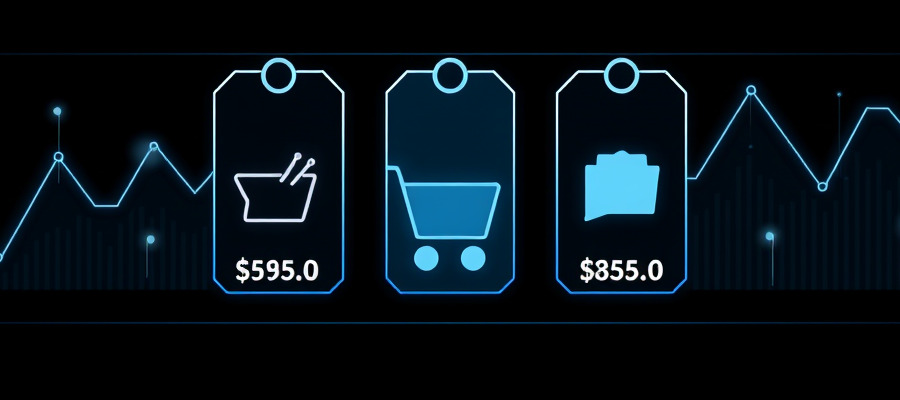Email Automation: Best Practices for Higher Engagement
Craft effective automated email sequences that convert.

Email Automation: Best Practices for Higher Engagement
Email automation is no longer a luxury; it’s a necessity for businesses aiming to thrive in today’s digital landscape. This guide delves into email automation best practices that significantly boost engagement, nurture leads, and drive conversions. Mastering these techniques can transform your email campaigns from lackluster to powerful.
Why Email Automation Matters
Before diving into best practices, let’s underscore the importance of email automation. It automates repetitive tasks, freeing up your time and resources. More importantly, it delivers personalized messages to your audience at the perfect time – when they’re most likely to engage. This leads to:
- Increased open and click-through rates.
- Improved lead nurturing.
- Higher conversion rates.
- Enhanced customer relationships.
Crafting Effective Automated Email Sequences
Successful email automation begins with strategic sequence design. Consider these vital elements:
1. Segment Your Audience
Don’t treat everyone the same. Audience segmentation allows you to tailor your message to specific groups based on their behavior, interests, and demographics. This personalization significantly improves engagement. Use tools like Mailchimp or ConvertKit, as well as advanced features like customer relationship management (CRM) integrations to achieve highly segmented lists.
- Example Segments:
- New subscribers
- Website visitors
- Customers who have made a purchase
- Customers who abandoned their cart
2. Develop a Clear Content Plan
Outline the content you’ll deliver in each sequence. Your email sequence should provide value to subscribers. Here are some popular automated email sequences:
- Welcome Series: Introduce your brand, offer a special deal, and set expectations.
- Lead Nurturing Series: Guide leads through the buyer’s journey with relevant educational content.
- Abandoned Cart Series: Remind customers of items in their cart and encourage them to complete their purchase.
- Onboarding Series: Guide new customers through the process of using your product or service.
3. Write Compelling Email Copy
Your email copy is critical. Focus on:
- Personalization: Use the recipient’s name and tailor content to their interests.
- Clarity: Get straight to the point and avoid jargon.
- Value: Offer something of value, such as helpful tips, exclusive discounts, or informative content.
- Compelling Subject Lines: Make recipients open your emails! Use tools to optimize them.
- Call-to-Actions (CTAs): Clear CTAs guide user actions in a very direct manner.
4. Design Visually Appealing Emails
While content is king, design shouldn’t be neglected. Ensure that your emails are:
- Mobile-Friendly: Most emails are opened on mobile devices.
- On-Brand: Use your brand’s colors, fonts, and logo.
- Easy to Read: Use clear formatting, images, and white space.
5. Set Triggers and Timing Strategically
Correct timing is crucial for email automation. Set appropriate triggers (e.g., subscribing to your newsletter, abandoning a cart) and schedule the emails to be sent at the right time. A/B testing is helpful.
- Welcome emails: Send these immediately after signup.
- Abandoned cart emails: Send them within an hour of cart abandonment.
- Lead nurturing emails: Space them out over days or weeks.
Best Practices for Higher Engagement
Beyond the basic sequence setup, follow these best practices:
1. Personalize Everything
Personalization goes way beyond using the recipient’s name. Use data to tailor content, offers, and product recommendations.
- Dynamic Content: Display content specific to each subscriber.
- Behavioral Targeting: Send emails based on their activity on your website or app.
2. Optimize for Mobile
As mentioned, most emails are opened on mobile devices. Ensure your emails render properly on all devices.
3. A/B Test Constantly
Test different subject lines, email copy, CTAs, and design elements to see what performs best. Use different subject lines, content offers, and CTAs.
4. Monitor Your Results Continuously
Use email analytics to track these metrics:
- Open rates
- Click-through rates
- Conversion rates
- Unsubscribe rates
Analyze the data to identify what’s working and make necessary adjustments. Continuously refine your strategy for improved performance.
5. Comply with Email Regulations
Always include an unsubscribe link and be compliant with anti-spam laws. Avoid spam filters. Legal compliance is non-negotiable!
Tools for Email Automation
Many tools can help you with email automation. Some popular options include:
- Mailchimp: An easy-to-use platform for email marketing and automation.
- ActiveCampaign: A more advanced solution with robust automation features and CRM integration.
- ConvertKit: Focused on creators and bloggers, with great segmentation and automation capabilities.
- GetResponse: A comprehensive marketing platform offering email automation, webinars, and landing pages.
Conclusion
Implementing these email automation best practices will yield higher engagement, nurtured leads, and a stronger customer base. Remember, continuous testing, analysis, and refinement are key to ongoing success. Start automating, start engaging, and watch your business grow!



